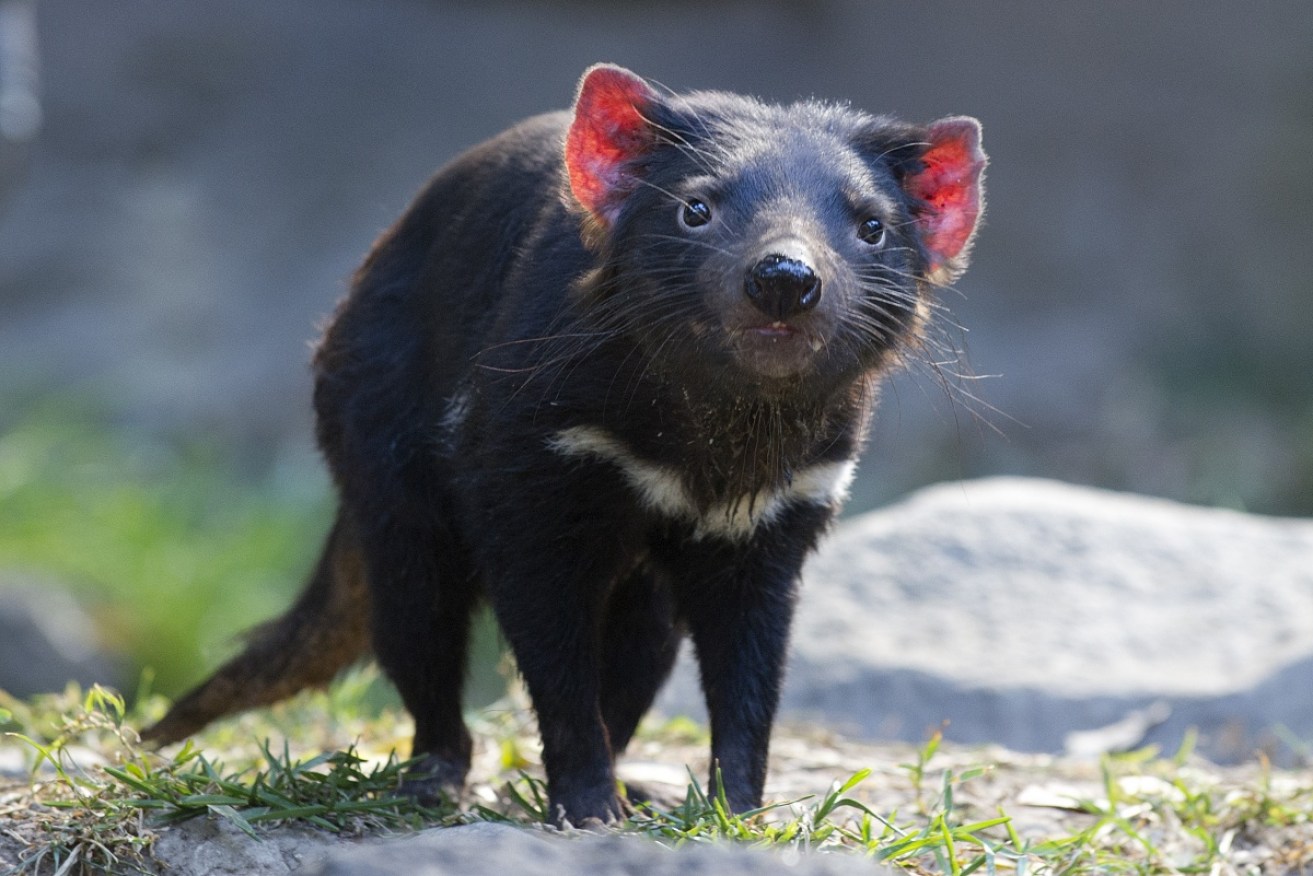Tasmanian devils beating cancer through adaptation

Researchers are surprised at how quickly the devils are adapting to the cancer. Photo: AAP
Tasmanian devils are developing resistance to the devil facial tumour disease, potentially saving themselves from extinction, new research has found.
The international study, published today in the journal Nature Communications, looked at tissue samples taken from Tasmanian devils at three sites across the state over a 17-year period.
Researchers have identified genetic changes in the mammals that are associated with fighting cancer.
University of Tasmania’s School of Biological Sciences Associate Professor Menna Jones said it was a significant find.
“The main result of this study is that the devil is evolving at a genomic level,” she said.
“The regions [in its DNA] that are changing in response to the disease are those that are associated with cancer and immune function.
“It indicates that the devil is adapting, it’s responding to the disease in ways that it may be able to beat the cancer and save itself.”
The devil facial tumour disease is a transmissible cancer that was first discovered 20 years ago.
Since then, the devil population has declined by more than 80 per cent.
Researchers expected the species would build a resistance to the cancer, but were surprised at how quickly the devils were adapting.
“When a new disease enters a population … it’s often very devastating, it’s often highly lethal to that animal,” Associate Professor Jones said.

The devil facial tumour disease has wreaked havoc on the wild population. Photo: AAP
“That puts a lot of evolutionary pressure on the animal to survive the disease.
“The pathogen — in this case, the tumour — we expect that to become … less dangerous to devils over time and we expect the devils to evolve resistance and tolerance.
“This is the first evidence we have of that.”
Professor Hamish McCallum, from Griffith University in Queensland, who is part of the research team, said the findings were an unexpected turnaround.
“I published modelling seven years ago that suggested these populations should be extinct by now and they’re not,” he said.
“Tasmanian devils have got very low genetic diversity. Evolution can happen rapidly but it needs existing genetic variation to work from.
“To find this rapid change in populations with very low genetic diversity is something we didn’t expect.”
It is hoped the species will continue to adapt to the cancer, slowing the rate of population decline.
“I think that’s the only thing that can save the devils — that it’ll save itself,” Associate Professor Jones said.
The Trowunna Wildlife Park near Mole Creek is home to more than 60 Tasmanian devils, being kept in captivity as part of the species’ insurance population.
Park owner Androo Kelly said he was not surprised wild devils were adapting to the disease.
“The Tasmanian devil has proven to us over the past decade — given the 15 year extinction model 12 years ago — [that they’re] a lot more resilient, adaptive,” he said.
Significant find for cancer research
Associate Professor Jones hoped the findings would help researchers to better understand cancers in humans and other species.
“We’re seeing a cancer in its very early stages, in its first 20 years of life as a cancer, so we’re able to watch the evolution of the cancer and the evolution of the animal it’s infecting,” she said.
“It provides us with an amazing opportunity to study how cancers evolve and how hosts can evolve to overcome cancer.”
Professor McCallum said evolution could be the key to the animal’s long-term survival, but there were still unanswered questions about how it deals with the deadly tumour.
“Whether or not those populations will recover and whether the disease will still be there are things we don’t know,” he said.
— ABC








